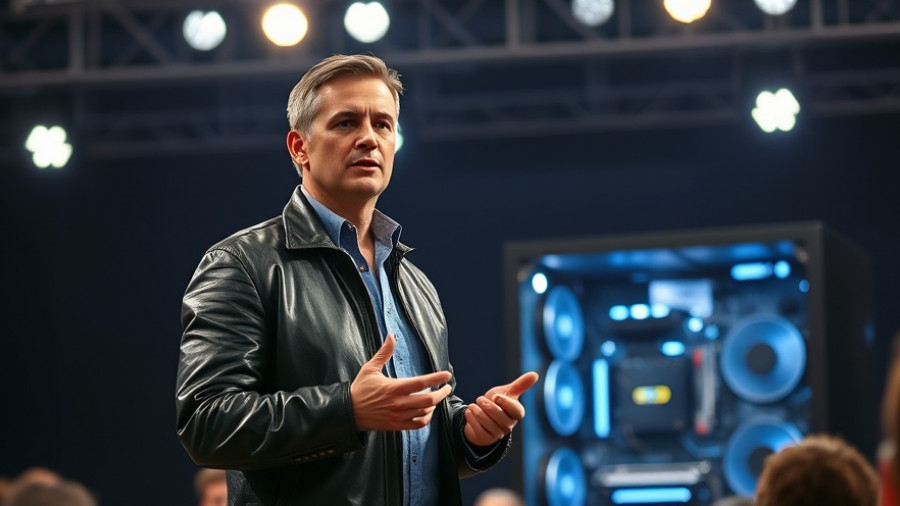
Understanding Intel's Surge in the Market
Intel's recent stock surge, rising by about 50%, marks a pivotal resurgence for the tech giant, fueled significantly by the government's unexpected support and high-profile partnerships. The involvement of both former President Donald Trump and Nvidia in Intel's resurgence represents a notable shift in the landscape of the semiconductor industry, placing Intel at the forefront of AI innovation.
The Role of Government Intervention
One key factor behind Intel's recovery is the U.S. government's willingness to invest heavily in the company, committing approximately $9 billion to assist Intel in reigniting its productivity. This kind of government intervention isn't unprecedented. As reported by Investor's Business Daily, Trump has been proactive in leveraging governmental influence to shape corporate fates, a move that starkly contrasts the traditional hands-off economic policies usually advocated by conservatives. This hybrid approach of state capitalism seems to be making waves, as demonstrated by Intel's impressive stock performance.
Nvidia's Strategic Alliance with Intel
In a remarkable business maneuver, Nvidia recently acquired a $5 billion stake in Intel, marking a significant collaboration between the two tech giants. This partnership aims to combine Nvidia's advanced AI technologies with Intel's robust CPU ecosystem, potentially creating a formidable force in the AI arms race against competitors like Nvidia's established foe, China. Fast Company noted that this unprecedented collaboration could reshape the tech landscape, providing both firms a competitive edge.
The Impact of Trump's Economic Policies
Trump's economic strategies have now set the stage for the ongoing conflict between U.S.-based tech companies and international competitors, primarily from China. The strategic partnerships fostered under Trump's administration, such as the support to Intel and investments in companies like MP Materials, provide the U.S. with vital leverage in the tech arena. Critics, however, caution that such interventions blur the lines of free-market principles and could result in crony capitalism. The balance between fostering innovation and maintaining market integrity is one that policymakers must navigate carefully moving forward.
Nvidia's Challenges in the Chinese Market
Nvidia is currently facing hurdles in China, where governmental restrictions on chip sales could hinder its market share in one of the largest tech markets globally. This tension with Beijing has broader implications for the supply chain and competitive landscape in the tech industry, raising questions about how U.S. companies will adapt and compete amidst rising geopolitical tensions. Nvidia’s relationship with Intel might provide a crucial avenue for resilience against external pressures and bolster their collective presence in the market.
Lessons and Future Implications for AI Enthusiasts
This remarkable turnaround for Intel serves as a vibrant case study for AI enthusiasts about the interplay of politics, market dynamics, and technological advancement. The dynamics showcased may serve as a reference point for understanding how economic policies can drive innovation in the tech sector. The changing landscape indicates that traditional boundaries between government and industry are evolving, leading to potential opportunities for collaborations that may define the future of technology.
Call to Action: Stay Informed
As the tech industry continues to evolve rapidly, it's essential for AI enthusiasts to stay abreast of the latest developments. Understanding the implications of Intel and Nvidia's partnership can offer insights into future trends and potential investment opportunities in the AI landscape. Keeping informed about shifts in government policies and corporate alliances will be critical for grasping the bigger picture of how technology will shape our world.
 Add Row
Add Row  Add
Add 




Write A Comment